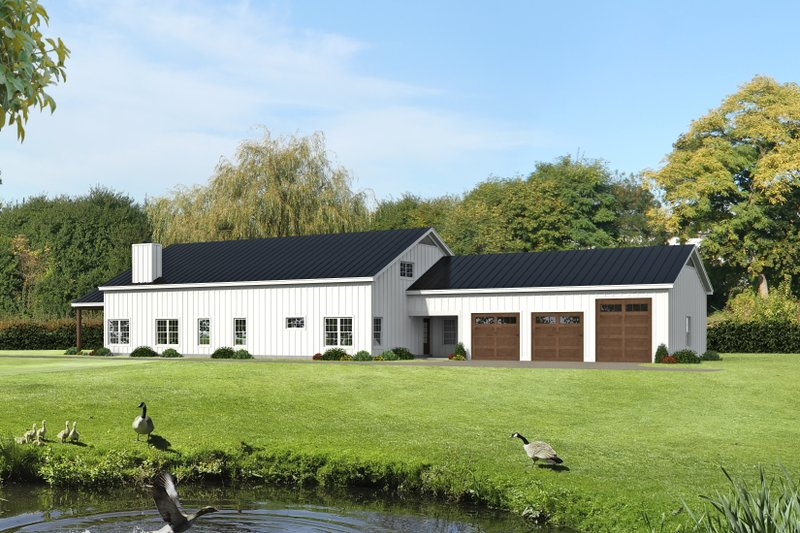Exploring Cool Hexagon House Plans

Exploring Cool Hexagon House Plans: A Unique Take on Home Design
Hexagon house plans are an exciting and distinctive option for homeowners who want to break away from the traditional rectangular or square home designs.
The six-sided shape of these homes offers unique structural, aesthetic, and practical advantages, creating spaces that are not only functional but also visually striking.
In this article, we’ll explore why hexagonal house plans are becoming increasingly popular, the key features of these designs, and how to read and interpret a hexagonal floor plan effectively.
Why Choose a Hexagonal House Plan?
Hexagonal homes, with their geometry and innovative design, are becoming a choice for homeowners looking for something outside the norm.
Here’s why you might consider building a hexagonal home:
Efficient Use of Space
One of the primary advantages of hexagonal house plans is their efficient use of space.
Traditional rectangular homes have corners and long walls that may leave areas underused.
In contrast, a hexagonal layout eliminates the corners, allowing you to use more of the available space in each room.
The six sides of a hexagon naturally create an open, circular flow, offering flexibility in room design. In addition, the layout can often accommodate larger, open areas without sacrificing comfort.
Energy Efficiency
The energy efficiency of hexagonal homes is another significant benefit.
With fewer exterior walls compared to a rectangular house, these homes have less surface area for heat loss, which can help maintain a comfortable interior temperature year-round.
The shape allows for better natural light distribution, reducing the need for artificial lighting during the day.
The compact structure of the home helps to keep heating and cooling costs lower compared to more traditional homes, making hexagonal homes an environmentally friendly option.
Aesthetic Appeal
A hexagonal home stands out in a crowd.
The unique angular design creates a striking visual that breaks away from conventional house shapes.
Whether you're looking for a modern, minimalist aesthetic or something that blends into a natural, rustic environment, hexagonal homes offer a design that can cater to a variety of styles.
The shape also allows for interesting exterior features such as wraparound decks, custom windows, and unconventional rooflines, enhancing the home’s overall look.
Better Viewpoints and Natural Light
The six sides of a hexagonal house provide multiple opportunities for windows, enabling panoramic views from various parts of the home.
Whether you're situated on a scenic hilltop, near a coastline, or in a forested area, you can enjoy sweeping views from every angle.
The placement of windows in a hexagonal design also allows for ample natural light to enter the home, brightening interiors and providing a connection with the outdoors.
Strong Structural Integrity
When built correctly, hexagonal homes are known for their strong structural integrity.
The shape naturally distributes weight evenly across the entire house.
This even distribution helps to ensure that the home is resistant to extreme weather conditions such as heavy winds or snow.
Furthermore, hexagonal homes have a strong foundation, making them ideal for areas prone to seismic activity.
Key Features of Cool Hexagon House Plans
Hexagonal house plans come with distinctive features that set them apart from traditional square or rectangular house plans.
Here are some of the key design features you’ll find in hexagonal homes:
Open Floor Plan
One of the hallmark features of hexagonal house plans is the open floor plan.
The lack of traditional corners and walls enables large, open spaces where rooms flow into each other seamlessly.
Living areas like the living room, dining room, and kitchen can often be combined into one expansive space, promoting interaction and making the home feel larger and more airy.
The flexibility of an open floor plan allows homeowners to adapt the space as their needs change over time.
Large Windows and Glass Walls
Hexagonal houses typically make the most of natural light, often featuring large windows or even glass walls.
These windows are strategically placed to maximize views of the surrounding landscape.
The design of the house ensures that nearly every room has access to light and an expansive view.
Whether it’s a full-wall window in the living room or a skylight above the kitchen, the ample glass in a hexagonal home creates an uplifting atmosphere that connects the indoors with the outdoors.
Centralized Living Area
In many hexagonal house plans, the central space of the home becomes the focal point for the living, dining, and kitchen areas.
Surrounding this central area, rooms like bedrooms, bathrooms, and offices branch off from the main space.
This centralized design creates a cohesive, open environment, where the various parts of the home flow naturally into each other.
It also promotes communal living while ensuring privacy for personal spaces.
Unique Roof Designs
The roof is one of the most unique aspects of a hexagonal home.
Many hexagonal house plans feature a cone-shaped or pyramid-style roof.
This not only enhances the geometric design but also provides practical benefits like improved drainage and greater wind resistance.
The roof shape can also be used for sustainable features, such as solar panels or rainwater harvesting systems.
For those looking to add a modern touch, a flat or green roof can also be an option.
Flexible Interior Layouts
The layout inside a hexagonal home can be incredibly flexible.
Although the shape of the house is fixed, the interior walls can be customized to suit the needs of the homeowner.
Whether you want a spacious, open-plan living area or a more segmented approach with private rooms, the hexagonal layout allows for a range of possibilities.
Rooms can be partitioned using creative designs, and open spaces can be segmented with sliding doors or other movable barriers.
How to Read a Hexagonal House Plan
Understanding how to read a hexagonal house plan is key to realizing the full potential of this unique architectural design.
Here are some tips to help you decode the symbols and features found in these plans:
Walls and Structure
In a hexagonal house plan, exterior walls are usually marked with thick solid lines, while interior walls are depicted with thinner lines.
The unique angles of the walls may appear different from traditional home plans, creating an angular but visually interesting space.
Pay close attention to the angles and lines, as they define the space and layout of each room.
Windows and Doors
Like traditional floor plans, windows and doors in hexagonal house plans are depicted using specific symbols.
Windows are often represented by thin lines, while doors are shown as arcs to indicate the direction in which they open.
With hexagonal designs, windows are frequently placed along the angled walls to capture the best views, so it’s essential to note the position of each window for light and ventilation.
Room Designations
Each room in a hexagonal home will typically be labeled with its function, such as “living room,” “kitchen,” or “master bedroom.”
Because the layout tends to be open, identifying the flow of space between rooms is essential.
You might find that certain areas are centrally located, while others branch off around the edges of the hexagon.
Special Symbols
Similar to traditional floor plans, hexagonal designs include symbols for fixtures such as sinks, bathtubs, and electrical outlets.
For example, a bathtub might be represented by a simple oval or rectangular shape, while a sink would be shown as a small square with lines for plumbing connections.
Some plans may also include symbols for outdoor features like decks or patios, which often surround the hexagonal home.
FAQ:
Q1: What is a hexagon house plan?
A hexagonal house plan features a six-sided home design that maximizes space efficiency, energy efficiency, and aesthetic appeal.
These homes offer a unique look and functional layout that stands out from traditional house designs.
Q2: What are the advantages of a hexagonal home?
The advantages include efficient space use, better energy efficiency due to fewer exterior walls, panoramic views, and a strong, durable structure.
Additionally, the open floor plan and large windows make the home feel light, airy, and connected to nature.
Q3: Are hexagonal houses easy to build?
Building a hexagonal house may be more complex than a traditional home due to its unique angles.
However, with proper planning and experienced contractors, hexagonal homes can be successfully constructed with ease.
Q4: How do I choose the best hexagonal house plan for my needs?
When choosing a hexagonal house plan, consider factors such as the size of the plot, your family’s needs, the surrounding environment, and your personal style.
Ensure that the design maximizes the natural light and space flow to create a comfortable living environment.
Conclusion
Hexagonal house plans are an exciting and innovative way to build a home.
Their efficiency, unique design, and energy-saving benefits make them an excellent choice for homeowners looking for something different.
Whether you’re drawn to the aesthetic beauty of the shape or the practical advantages, a hexagonal house could be the perfect fit for your next project.
With careful consideration of your needs and the design, you can build a home that is not only functional but also stands out in any neighborhood.




